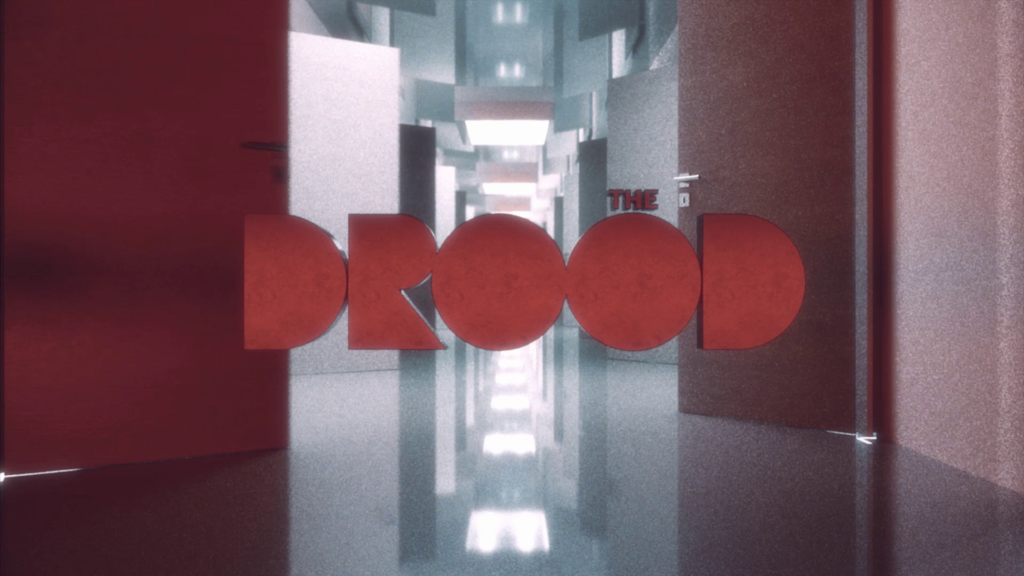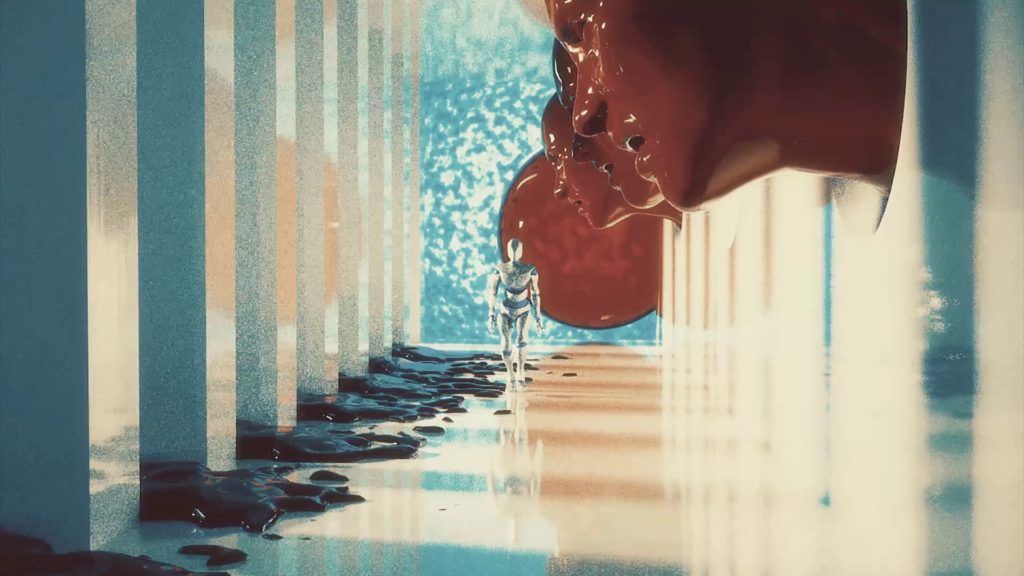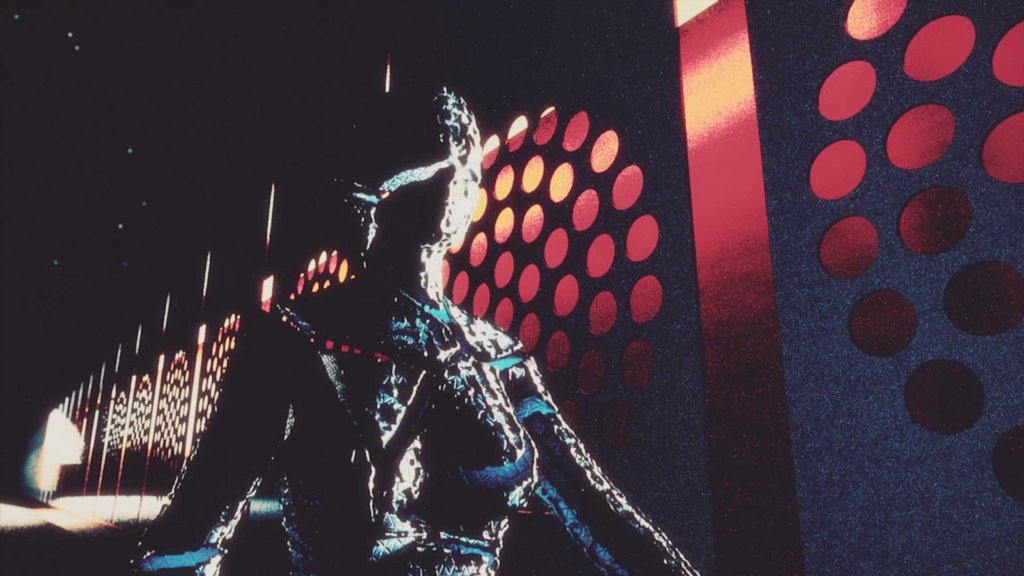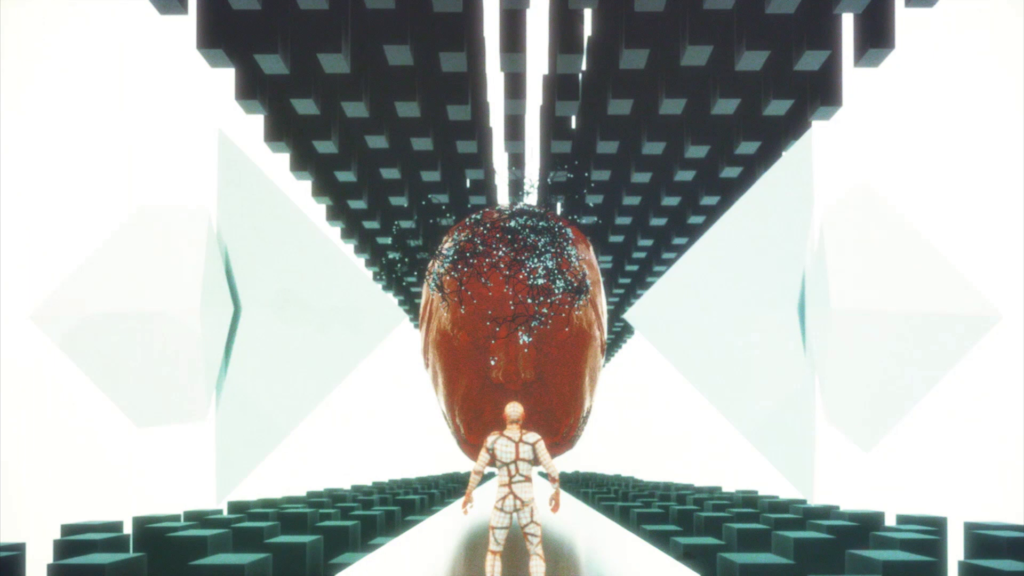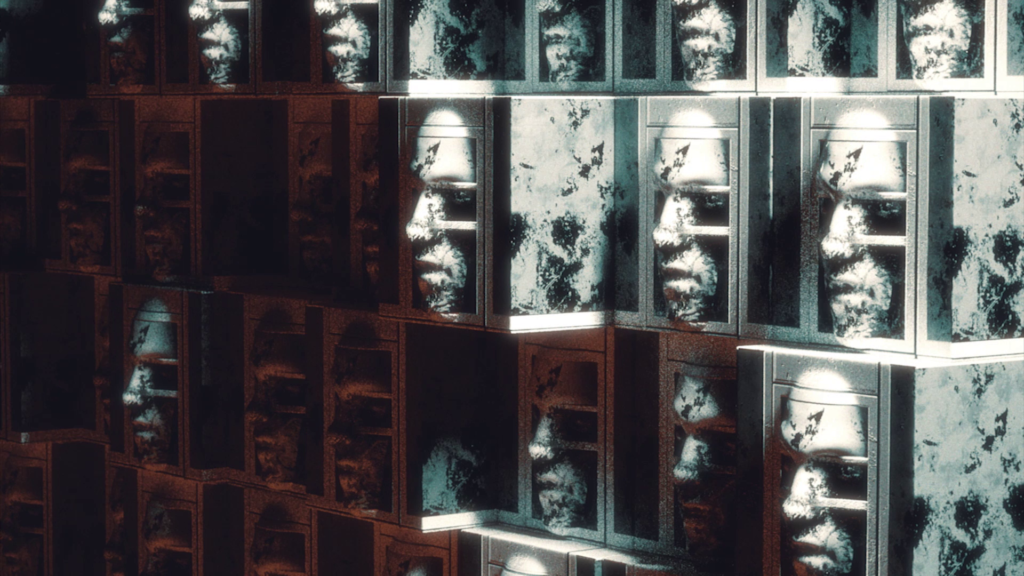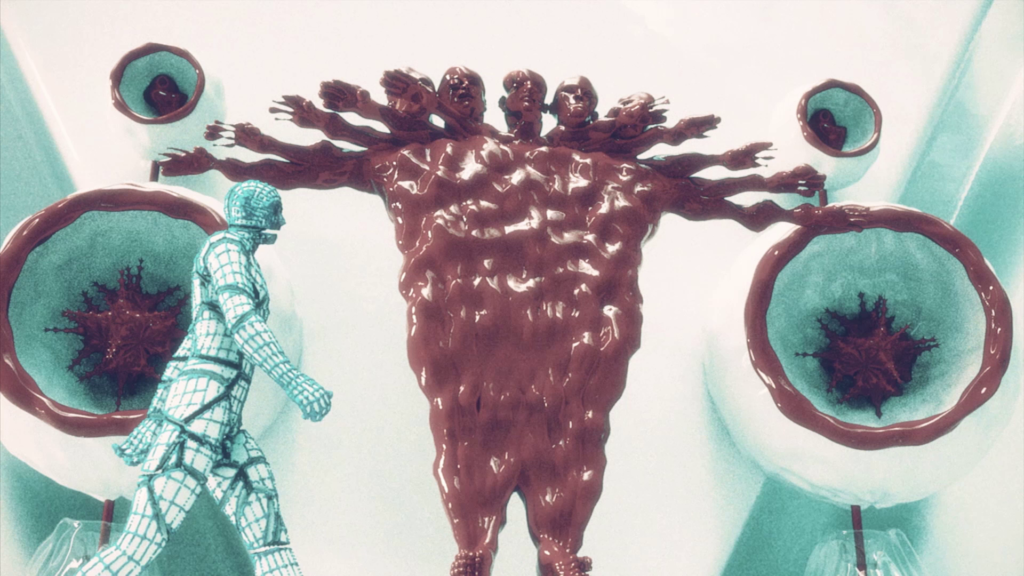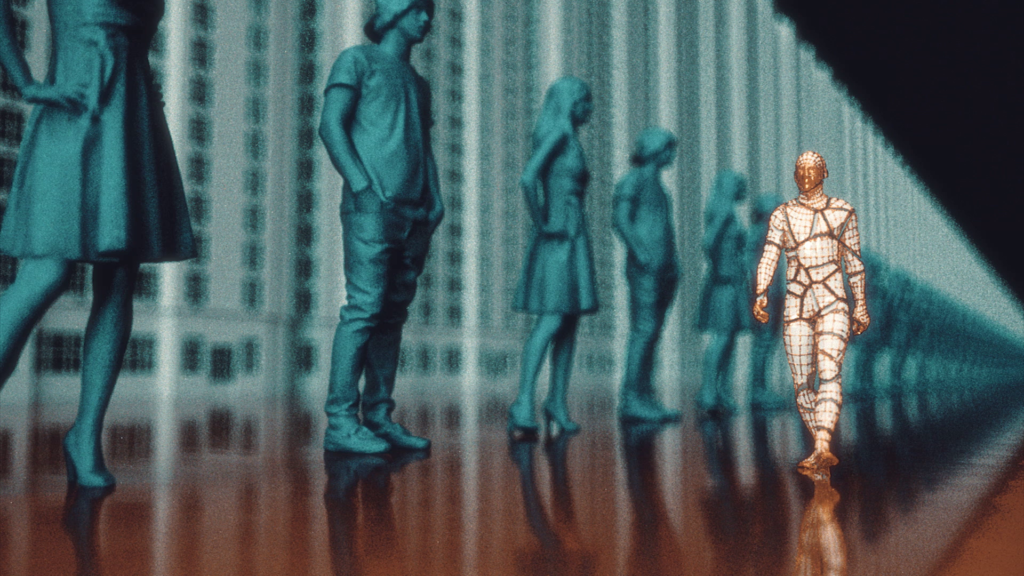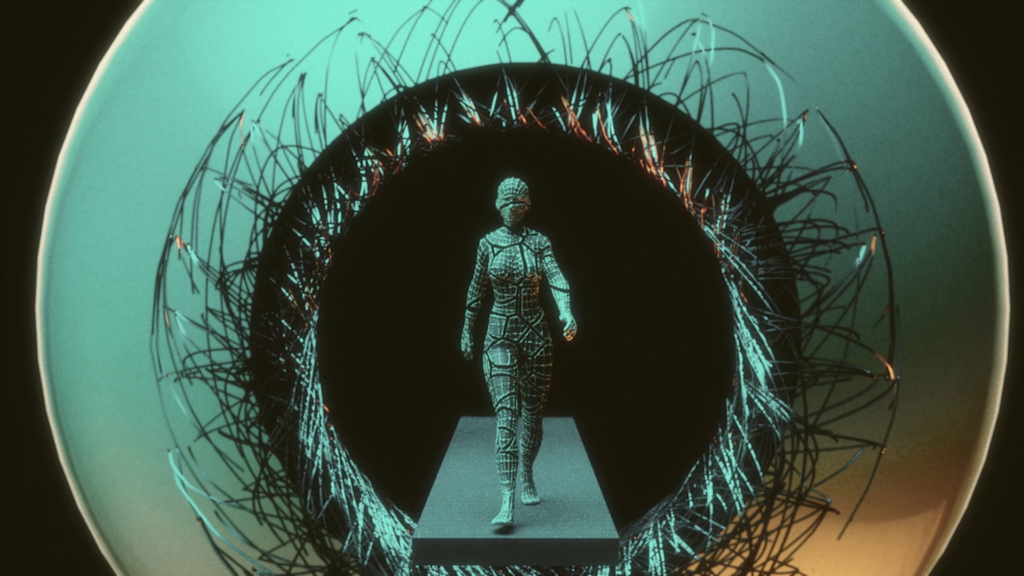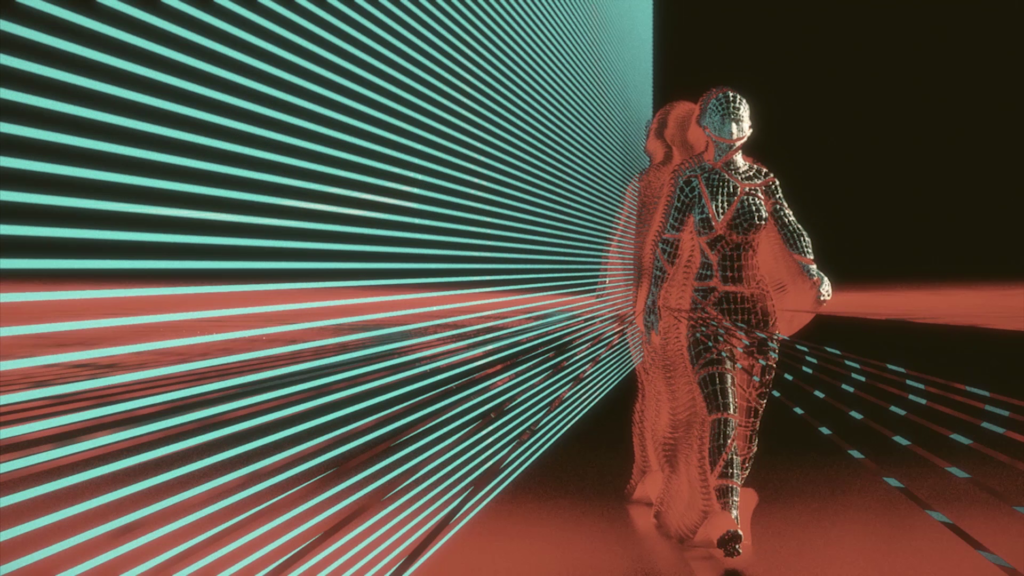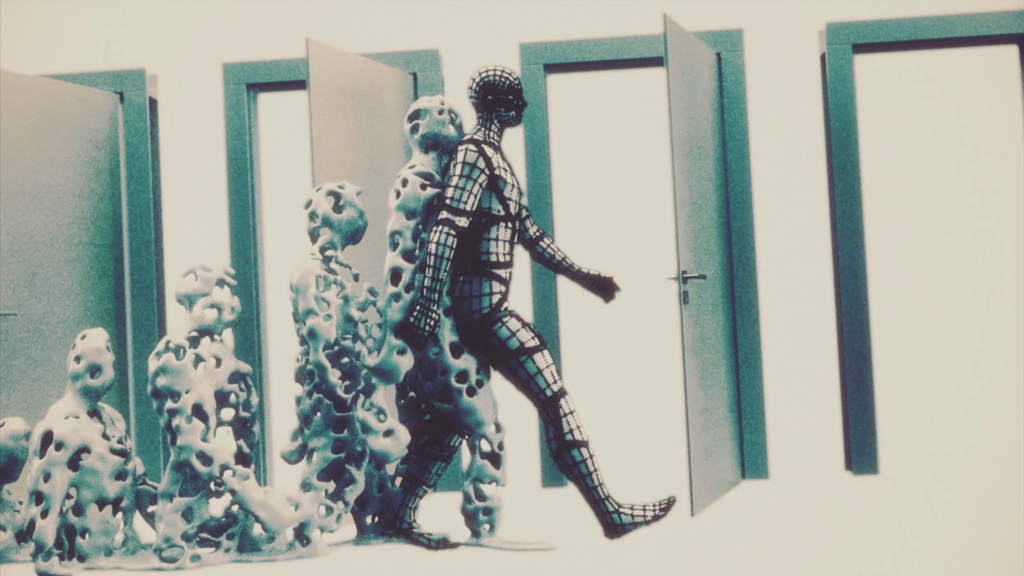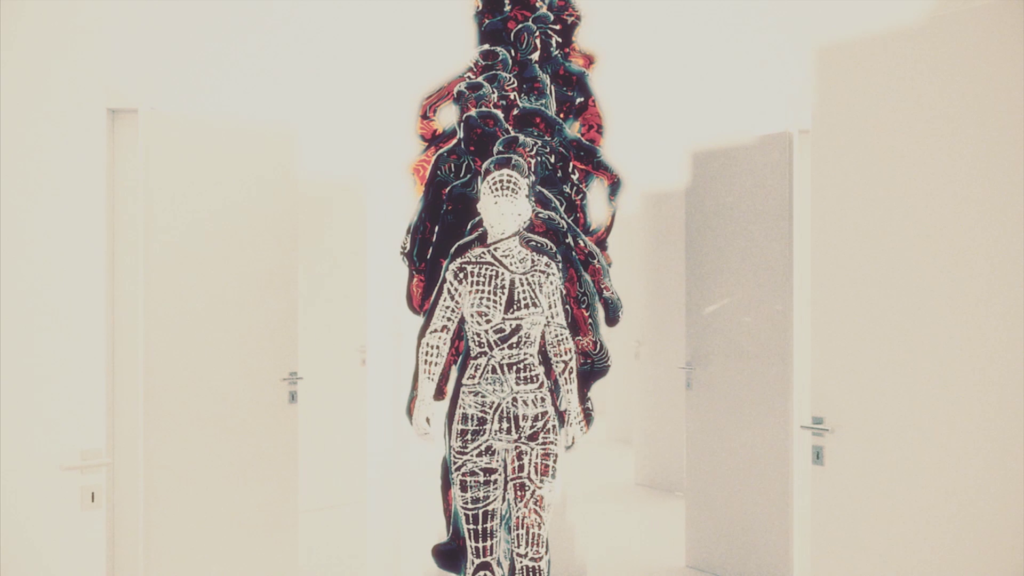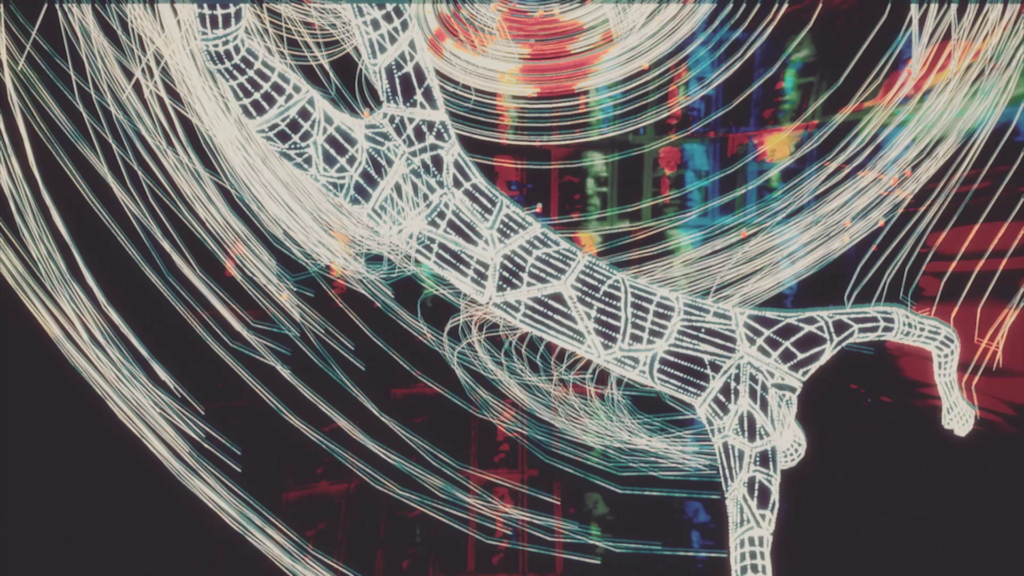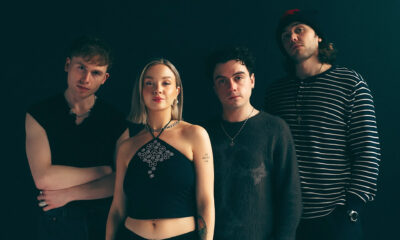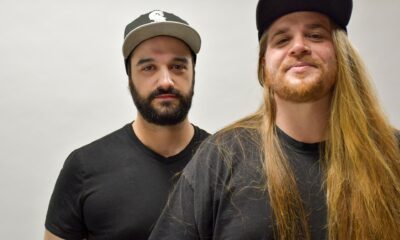Alternative/Rock
Behind the Video: The Drood Dive into Their “Psychic Institute” Music Video
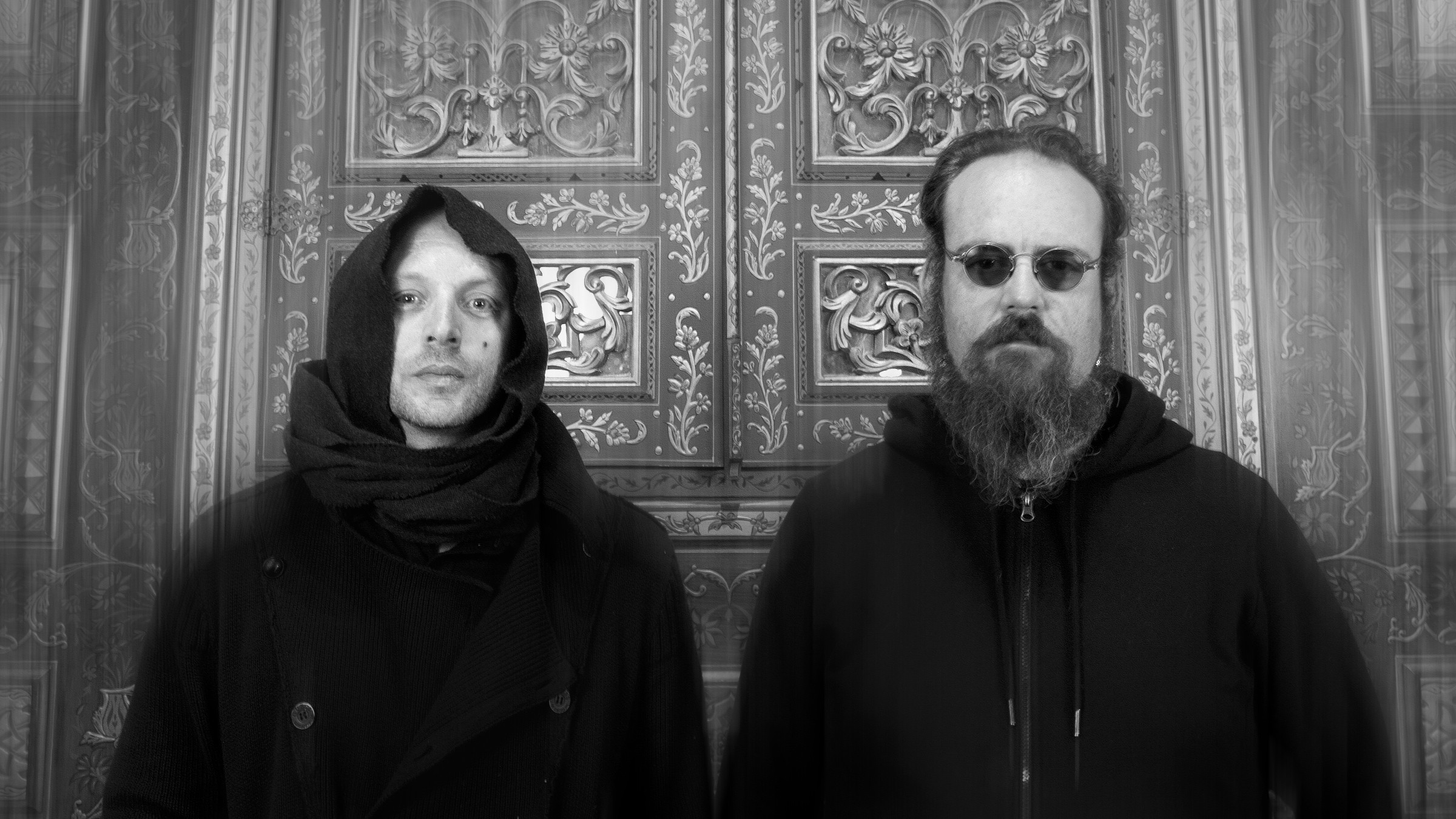
Fleeting musical trends and flavours of the week be damned. The Drood play by their own set of musical rules, detached from what’s currently deemed as popular or desirable. They are a full-on post-industrial rock outfit that would sound well situated within the 1980s electronic and alternative scene. Dark and airy, the duo’s sound is a celebration of classic electronica and industrial, with obvious similarities to Gary Numan, New Order, and Nine Inch Nails. Their latest single, “Psychic Institute,” is brooding, entrancing, and engaging, with nice, thick electronic beats that bring spirit and intensity and harken back to a special time in alternative music.
Based in Denver, Colorado, The Drood are celebrating their tenth year anniversary together this year. It was in 2016 when they released their full-length debut record, led by the creative prowess of singer, guitarist, and frontman Nathan Jamiel. He is so capably backed up by his musical partner in crime, drummer and keyboardist Daniel Watts. With so many imitators and duplicators, it’s nice to hear an act like The Drood that isn’t afraid to go against the grain.
More than just a musical act, The Drood also take the visual aspects of their songs very seriously. We recently spoke with Watts and Jamiel to discuss the video for “Psychic Institute,” devising it, and shooting it, and we also discussed music videos as a general medium for artists today.
Your animated video is totally hype. How did it come together? Who helped to animate the clip and how was it done?
Daniel Watts: “The music video is the work of Tom Nelsen. He created everything about the video, the concept, the art, the models, and the motion. Tom is a fantastic media artist who does solo work as ‘Sense From Nonsense.’ He did the video for our last single, It ‘Must Needs Wither,’ and we enjoyed his work on that so much that we knew we wanted to work with him again.
“We had a few songs close to finished, so we asked him to choose the song that inspired him the most. He sent us a couple of rough cuts along the way, but we never had any suggestions. Tom had these cool ideas and just made everything work really well with the song.”
Nathan Jamiel: “Seconded! I can’t say enough good things about Tom’s work. Not only is he a brilliant filmmaker, but also a very gifted musician. He played in the experimental band Echo Beds for which he made many videos. You can find their work on their YouTube page.”
How much of your new video was self-made?
Watts: “One-hundred percent of the video was self-made by Tom. We have a very strong DIY ethos. We pride ourselves on creating everything that you hear and see from The Drood. Sure we may use samples, snippets of things, and other bits of source materials, but all the visual art, music, and video released from The Drood are all projects in their own right. It’s not just about the music, we enjoy creating all sorts of things.”
Is a well-made DIY video just as good or beneficial as a professionally-made/directed video?
Watts: “Yes. If the passion can shine through, you can shoot a masterpiece on a cell phone. Polished shit is generally just there to telegraph that someone put up a bunch of money for the shit because they think they can sell it.”
Tell us about any good, bad, or crazy incidents that happened while working on the videos.
Jamiel: “Working with Tom Nelsen on ‘It Must Needs Wither’ and ‘Psychic Institute’ was an exercise in remote video work. He directed me remotely to capture video of my face and head, which he rotoscoped/3D animated into the floating head in ‘It Must Needs Wither.’ I think he took the film I provided, played it on a CRT television and then 3D mapped it. This most recent video for ‘Psychic Institute,’ the song had been written and mastered, and I sent it off to Tom and basically told him if he is inspired by it, go nuts! And he did.”
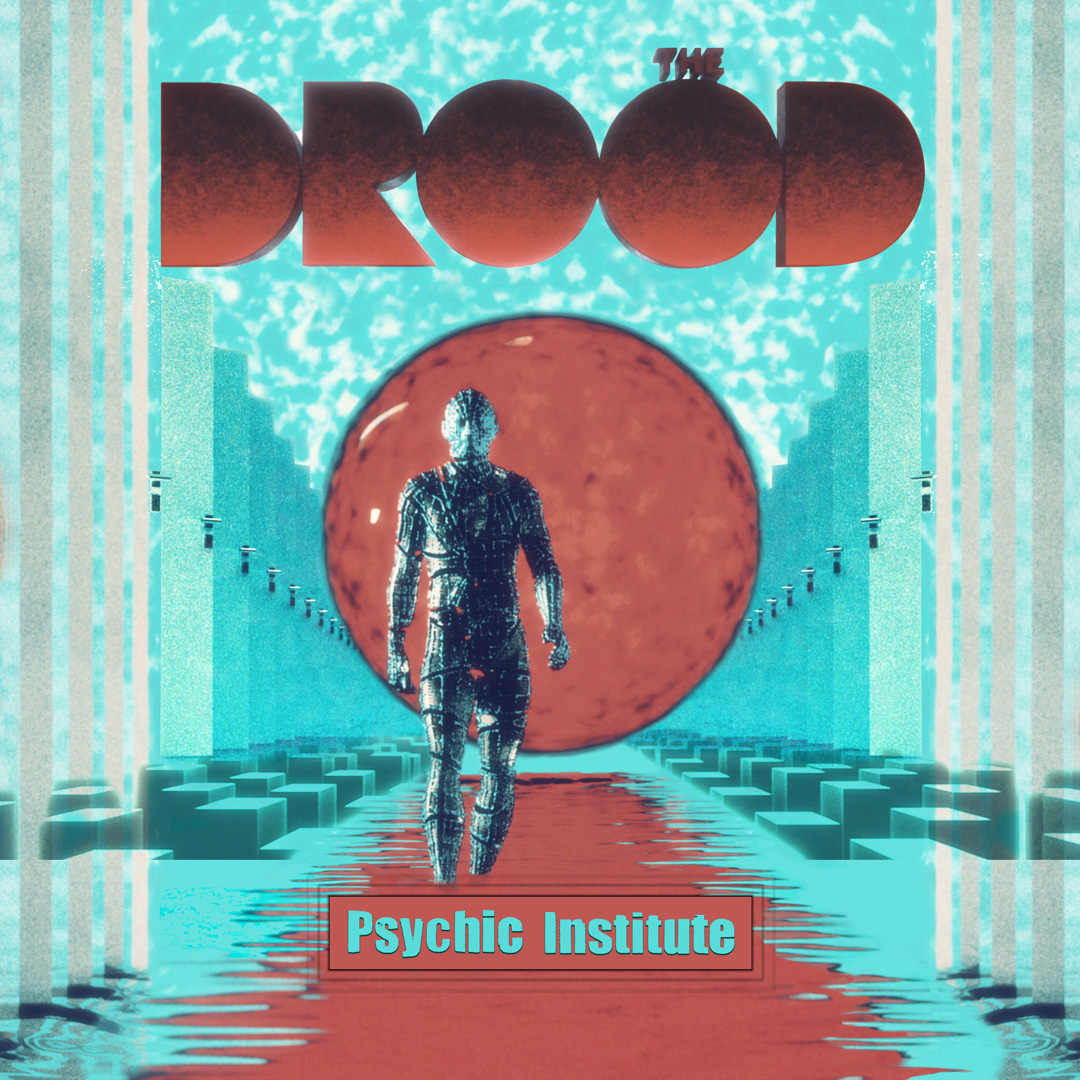
Artwork for the single “Psychic Institute” by The Drood
Any concepts where you started and, midway through, thought, “what the fuck are we doing?”
Jamiel: “I suppose I never know what we’re doing. We rarely, if ever, have any surgical intention when we create. There is a danger in over-architecting your art. Sometimes in the middle of a creative ritual, there is often a ‘WTF is this thing we’ve channeled?’ moment which is sometimes frightening and sometimes comical. I’m most pleased with our art when we don’t have a plan and just let it emerge.”
Watts: “I think I wonder what the fuck I am doing daily, maybe hourly, so having that happen during music is fine. Letting myself explore, make mistakes, and try stupid things are where inspiration comes from.”
If you could have any guest appear in your video, who would you have?
Jamiel: “I think it would be absurd and amazing to have Michael Winslow show up in a video. He was the beat-box, human sound machine from the Police Academy movies in the 1980s.”
Watts: “We have seriously thought about Michael. He is from Denver, so it would be a little like a hometown project or something. He is such an amazingly unique artist, it would be super fun and inspirational to build something around his abilities.”
Do you prefer writing a video around the theme of a song or just going to a warehouse and banging out a live performance?
Watts: “I think we really sort of do both. In the lead-up to a video, we are always throwing around ideas, images, little skits, and quips. We are always playing with what might be, but we have never gone so far as to storyboard or script anything. We might collect things, like costumes or parts of a background, props, and other weird stuff to use, but the actual creation is always in the moment and spontaneous. It’s like being guided by ideas but not constrained by designs.”
How does the music inform the video in terms of visuals matching sound?
Jamiel: “Working with Tom, I often send over a few tracks and let him decide which one moves him to create visual accompaniment. He felt that ‘Psychic Institute’ had a Gary Numan quality about it which inspired him. During the process, as with ‘It Must Needs Wither,’ we received mock-ups and previews. I felt his use of the black goo visual perfectly matched what emerged as the lyrical message, so I told him to lean into that.”
Have you ever had such a baller idea for a music video that you’ve written music for it?
Jamiel: “I wish! It has historically been the other way around. The music informs the video to a degree. However, and this may be a non-sequitur, Daniel and I decided to try our hand at scoring an existing film. We downloaded the original Nosferatu, and every few practices, we take a break from working on the set or a specific song and project the movie into the studio and just play and record. Sometimes we look up and whatever we’re doing seems to match the visuals. We hope later this year to actually play that out as a show.”
Are the benefits worth the costs and effort involved?
Watts: “Short answer: yes. Long answer: it doesn’t matter. If you’re doing art on a purely cost-balance basis, you might be doing it wrong. We are compelled to make art. It is a part of our lives whether or not the cash flow exists. Like anything, we hope all of our efforts pay off in the end, but also, like everything, that is not always the case. We just try to do what inspires us, and in that way, it is always worth the effort.”
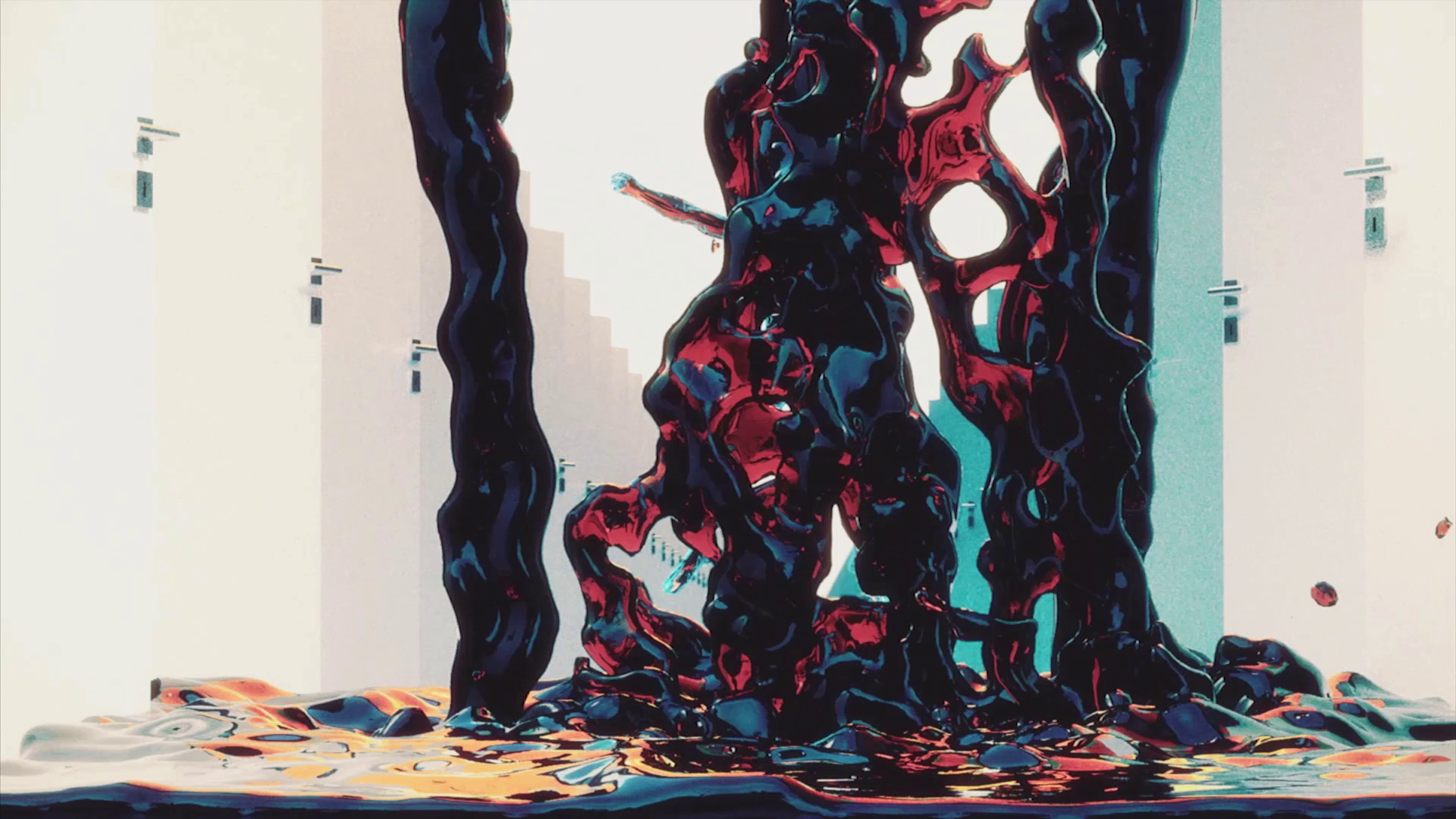
How important are music videos in terms of increased exposure?
Watts: “Any visual presence that accompanies music these days allows that music to reach a far wider audience, so I would say it is very important. Music itself can only be presented in so many ways, adding a visual element allows the music to be put places it could not go by itself. Videos are also fun to make and have the potential to draw in people who are attracted to the visual elements as much as the music.”
How much more effective or beneficial is creating a music video now compared to 20 or 30 years ago?
Jamiel: “Oh yeah, absolutely. Releasing a single with a video seems to get way more traction and attention than, say, releasing without a video, or releasing a full audio-only album. Audio alone seems to be a more antiquated idea with the younger generations. I mean, people aren’t going on TikTok or Instagram to listen to new music. They expect a catchy, short audio/video experience and if they like, then head on over to their favourite streaming service to indulge further.”
Do you think YouTube (or ‘online-only’ platforms) is a good enough platform by itself to justify creating a music video?
Jamiel: “I think YouTube and Vimeo, to a lesser extent, have become the dominant platform for music video dissemination. There are bands, like dark/synthwave Boy Harsher, who wrote a short indie horror movie around an album… or an album around a short indie horror movie… not sure which came first. They financed it themselves and released it on the horror streaming service, Shudder. Completely DIY. I am inspired by that.”
-

 Music7 days ago
Music7 days agoTake That (w/ Olly Murs) Kick Off Four-Night Leeds Stint with Hit-Laden Spectacular [Photos]
-

 Alternative/Rock22 hours ago
Alternative/Rock22 hours agoThe V13 Fix #011 w/ Microwave, Full Of Hell, Cold Years and more
-

 Alternative/Rock1 week ago
Alternative/Rock1 week agoThe V13 Fix #010 w/ High on Fire, NOFX, My Dying Bride and more
-

 Features7 days ago
Features7 days agoTour Diary: Gen & The Degenerates Party Their Way Across America
-

 Culture1 week ago
Culture1 week agoDan Carter & George Miller Chat Foodinati Live, Heavy Metal Charities and Pre-Gig Meals
-

 Music1 week ago
Music1 week agoReclusive Producer Stumbleine Premieres Beat-Driven New Single “Cinderhaze”
-

 Indie22 hours ago
Indie22 hours agoDeadset Premiere Music Video for Addiction-Inspired “Heavy Eyes” Single
-

 Alternative/Rock2 weeks ago
Alternative/Rock2 weeks agoThree Lefts and a Right Premiere Their Guitar-Driven Single “Lovulator”

